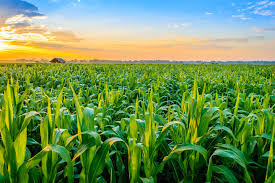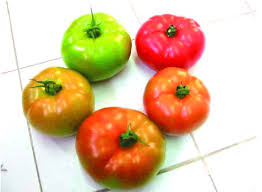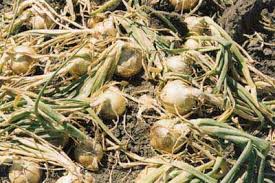With a few exceptions, most fruits reach optimal eating quality when allowed to ripen on the plant. However, some fruits are harvested at a mature yet unripe stage to withstand post-harvest handling conditions, especially when shipped over long distances.
Maturity indices for these fruits are based on a balance between factors that ensure the best eating quality for consumers and those that offer flexibility in marketing. Fruits can be classified into two groups:
Group 1: Fruits that cannot continue ripening once removed from the plant, such as cane berries, cherry, citrus fruits, grapes, lychee, pineapple, pomegranate, and strawberry.
Group 2: Fruits that can be harvested at maturity and ripen off the plant, including apple, apricot, avocado, banana, cherimoya, guava, kiwifruit, mango, nectarine, papaya, passion fruit, pear, peach, persimmon, plum, quince, and sapodilla.
Fruits in Group 1 produce very small amounts of ethylene and do not respond to ethylene treatment except for de-greening (removal of chlorophyll). These should be harvested when fully ripe to ensure optimal flavor quality.
In contrast, Group 2 fruits produce larger quantities of ethylene, which accelerates and makes ripening more uniform when exposed to it. Many vegetables, particularly leafy vegetables and immature fruit-vegetables like cucumbers, sweet corn, green beans, peas, and okra, achieve optimal eating quality before reaching full maturity.
Maturity indices are used to indicate the readiness of crops for harvest. These indices guide the determination of the harvest date, ensuring optimal sensory quality, appropriate post-harvest shelf life, proper scheduling of harvest and packing operations, and facilitating marketing.
Read Also: Health Benefits of Sidaacuta Tea
Physical Indices of Maturity in Crop Products

1. Skin Colour: This is a common indicator for fruits, as their skin colour changes as they ripen or mature. However, some fruits, depending on the type, may not show a perceptible colour change during maturation. For example, cultivars like the Hayward kiwifruit maintain their green flesh during maturation, while the ‘Sanuki Gold’ cultivar changes to golden-yellow.
Similarly, some avocado cultivars retain their green skin during maturation. Colour charts are available for fruits like apples, tomatoes, peaches, and chili peppers to assist in determining harvest maturity.
2. Shape: The shape of fruits can change during maturation and can be used to determine harvest maturity. For instance, bananas become more rounded and less angular as they mature, and mangoes change shape, with the relationship between the shoulders of the fruit and the stalk point becoming more even as the fruit matures.
3. Size: Changes in the size of a crop often indicate when to harvest. For instance, partially mature cobs of Zea mays saccharata are marketed as sweet corn, and smaller, less mature cobs are sold as baby corn. Bananas are harvested when the individual fingers reach a certain width, measured using a caliper, a method referred to as the caliper grade.
4. Aroma: As fruits ripen, they release volatile chemicals that contribute to their characteristic smell. These odours are more noticeable when the fruit is fully ripe, although this method has limited use in commercial settings.
5. Fruit Opening: Some fruits, like the ackee tree fruit, release toxic compounds during ripening. The fruit splits when fully mature, revealing black seeds in yellow arils. At this stage, it contains minimal amounts of hypoglycin, reducing health risks. However, this mature fruit has a very short post-harvest life, posing a challenge for marketing.
6. Leaf Changes: The condition of leaves often determines when fruits and vegetables should be harvested. For root crops, such as potatoes, the leaves’ condition indicates the best time for harvest. If harvested too early, the skins will be less resistant to damage and more prone to diseases during storage.
7. Abscission: A natural development in fruit is the formation of an abscission layer in the pedicel. In cantaloupe melons, for example, harvesting before this layer fully develops results in inferior-flavoured fruit, compared to those left on the vine until the layer is fully formed.
8. Firmness: Fruits change in texture as they mature, especially during ripening. As fruits soften, they are easier to harvest, and excessive moisture loss can also affect texture. Harvesters often judge ripeness by gently squeezing the fruit to assess its firmness. Today, sophisticated devices such as texture analyzers and pressure testers are used to measure fruit firmness.
9. Juice Content: Many fruits increase in juice content as they mature on the tree. The juice volume, when measured, is proportional to the fruit’s maturity.
10. Number of Days from Fruit Set: The time between fruit set and maturity varies among different fruits. For example, in Alphonso and Pairi mango varieties, it takes about 110 to 125 days for the surface colour to change and for the fruit to mature, while in Langra and Mallik varieties, it takes 84 and 96 days, respectively.
11. Specific Gravity: Specific gravity can be used as an index for maturity grading. For instance, mango fruits are graded by their specific gravity, which ranges from 1.01 to 1.02.
Read Also: Benefits and Uses of Utazi Leaf
Chemical Indices of Maturity in Crop Products

1. Sugars: In climacteric fruits, carbohydrates accumulate during maturation in the form of starch, which is later converted to sugar. In non-climacteric fruits, sugar tends to accumulate as the fruit matures. The sugar content is measured using a Brix hydrometer or refractometer, which measures the total soluble solids in the fruit juice.
2. Starch: Starch content in developing fruits, such as pears and apples, is a key indicator of harvest maturity. This is measured using iodine, which helps determine the amount of starch present.
3. Acidity: Many fruits experience changes in acidity as they mature. For example, in citrus fruits, the acidity decreases progressively as the fruit ripens on the tree. Maturity indices help determine the optimal harvest time to balance marketing flexibility and the attainment of acceptable eating quality.
Maturity indices not only guide harvest timing but also ensure that the harvested crops meet the quality standards required for consumer satisfaction.
Post-harvest life can often be influenced more by appearance factors such as colour and the absence of defects than by flavour, which tends to degrade faster once harvested.
Do you have any questions, suggestions, or contributions? If so, please feel free to use the comment box below to share your thoughts. We also encourage you to kindly share this information with others who might benefit from it. Since we can’t reach everyone at once, we truly appreciate your help in spreading the word. Thank you so much for your support and for sharing!
Frequently Asked Questions
We will update this section soon.

